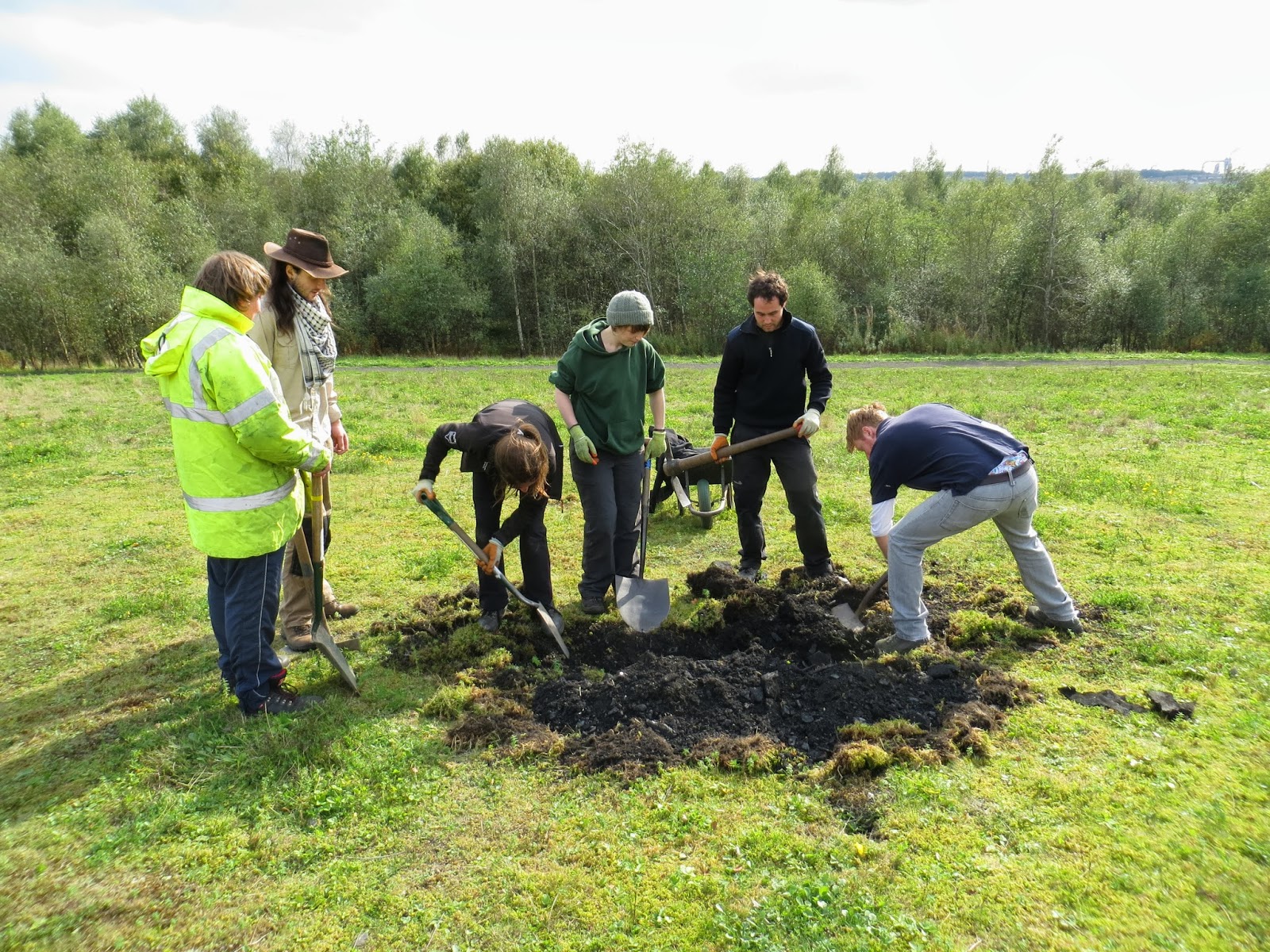The
bing at Fallin is the unwanted spoil from the coal mining industry and this
spoil actually lies on top of a peat bog! The bog Wester Moss is a Nature
Reserve and a Site of Special Scientific Interest and is just to the south of
Fallin Bing. The site is owned by Stirling Council and has been established as
a partnership with Butterfly Conservation and the local community of Fallin.
.JPG) |
| A volunteer with a leaf beetle on Wester Moss (c) Suzanne Bairner |
Wester
Moss is a lowland raised bog and these habitats are important for a wide range
of wildlife species. Lowland raised bogs are a very scarce habitat and are typically
found in the wetter parts of Britain within the north and west. Nearly 90% of their
former area has been lost in Scotland.
Invertebrate
species of conservation concern that have been recorded at Wester Moss include
the Large heath butterfly (Coenonympha
tullia) and the Bog sun-jumper spider (Heliophanus
dampfi).
 |
| Bog sun-jumper spider (Heliophanus dampfi) on Wester Moss (c) Lorne Gill |
The
Large heath is Britain’s only bog specialist butterfly and its caterpillars can
even survive short periods underwater when its foodplant, Hare’s-tail
Cottongrass (Eriophorum vaginatum)
gets submerged.
The
Bog sun-jumper is a tiny spider with distinctive fluorescent green legs and
mouthparts. This species has only been recorded from a handful of other sites
across Britain including Flanders Moss and Ochtertyre Moss that are both near Stirling.
Other
wildlife and plants recorded at Wester Moss include Emperor moths (Saturnia pavonia), Hieroglyphic ladybird
(Coccinella hieroglyphica), Common
lizard (Zootoca vivipara), Round
leaved sundew (Drosera rotundifolia)
and the Nationally Scarce Bog-rosemary (Andromeda
polifolia).
S.Falk.JPG) |
| The Hieroglyphic ladybird (Coccinella hierglyphica) (c) Steven Falks |
Butterfly
Conservation and Stirling Council are working to restore the bog to its former
glory and work to create more ditches and to remove birch scrub is on-going.
There is a habitat creation day on Saturday the 9th of November
(10am-3.30pm) and Wednesday the 13th of November (10am-3.30pm) that
everyone is welcome to attend for as little or as long as they want. For more
information about the day and to book a
place contact Scott Mason (Apprentice Ranger, Land Services), Stirling
Council, Allan Water House, Kerse Road, Stirling, FK7 7TE, Tel: 01786 237792, E-mail: masonsc@stirling.gov.uk
For
further habitat creation days at Wester Moss check out Butterfly Conservations
website: http://butterfly-conservation.org/842/scotland.html


.JPG)


.JPG)